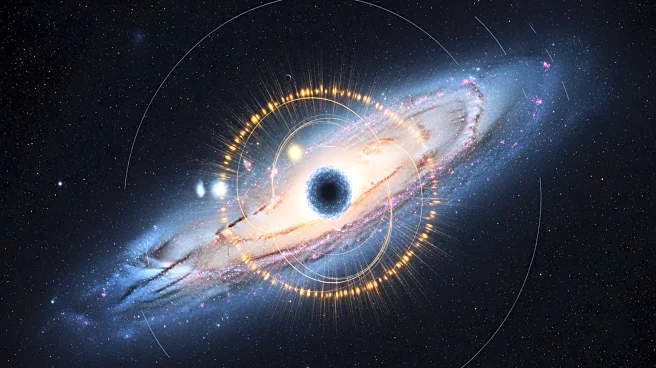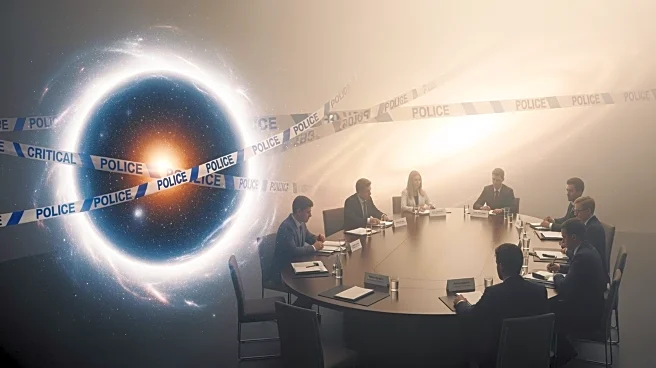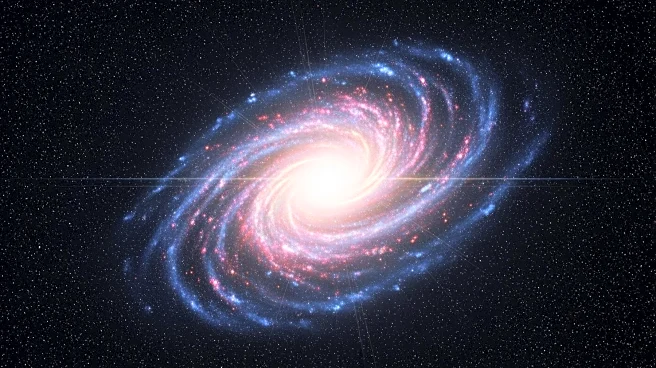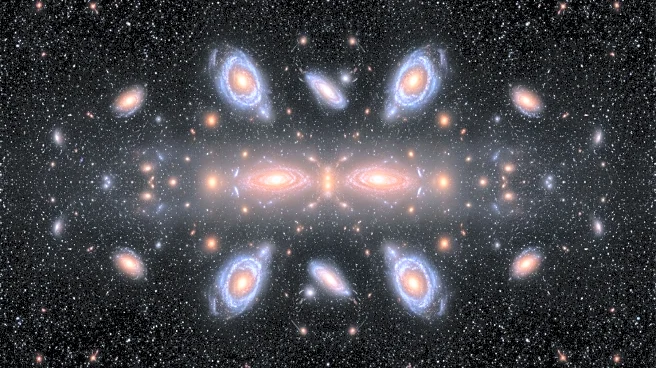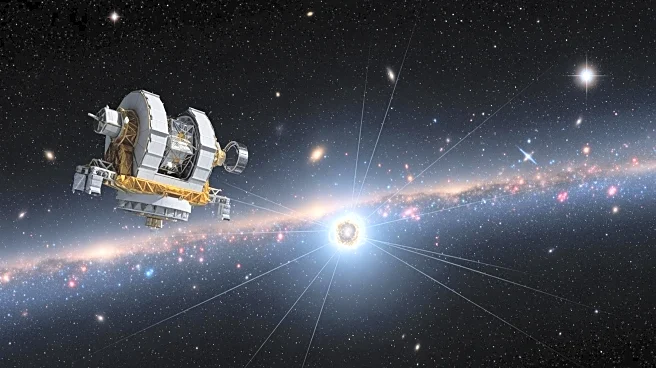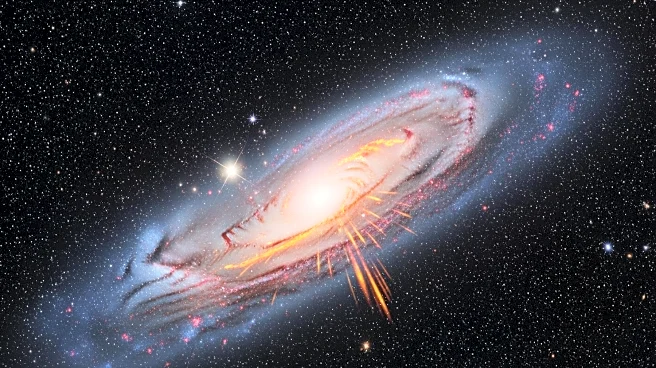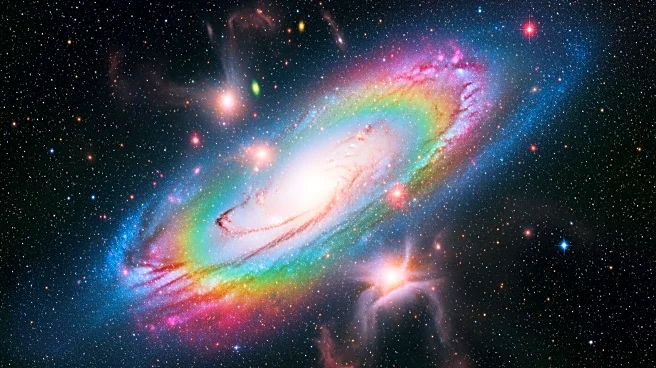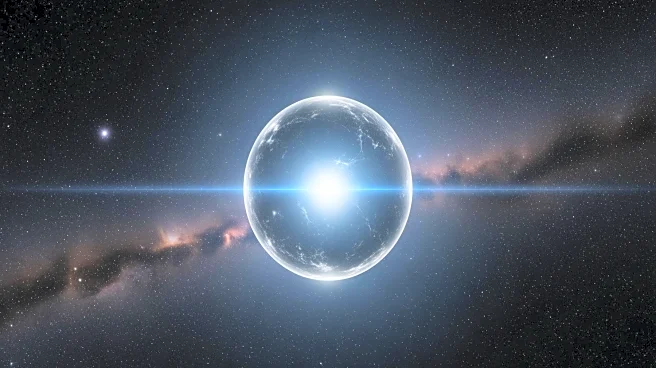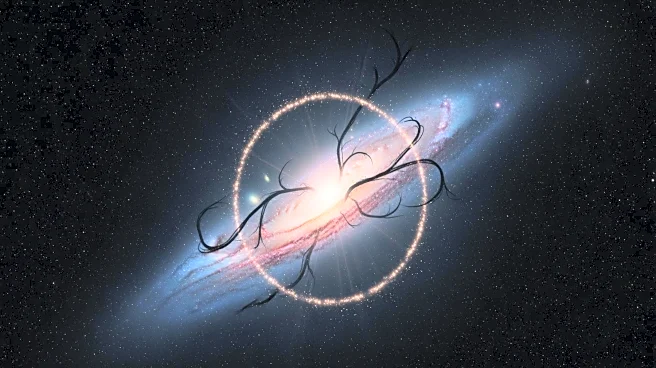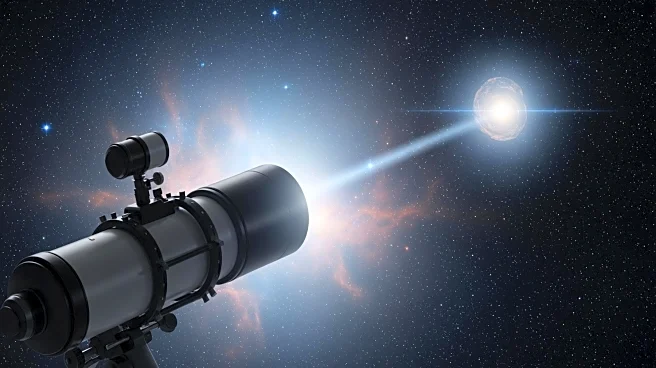What's Happening?
Researchers from the Leibniz Institute for Astrophysics Potsdam have conducted simulations suggesting that a faint glow at the center of the Milky Way could be a signature of dark matter. The study, led
by Moorits Muru, indicates that dark matter near the Milky Way's center might not form a perfect sphere but rather a flattened, egg-shaped structure. This shape closely mirrors the pattern of gamma rays observed by NASA's Fermi Gamma-ray Space Telescope. The findings build on research dating back to 2008 when Fermi first detected a broad, hazy glow of high-energy light near the galactic core. The study proposes that these gamma rays could be the result of dark matter particles known as WIMPs colliding and annihilating each other, although the possibility of millisecond pulsars contributing to the glow is not ruled out.
Why It's Important?
The study's findings could provide indirect evidence of dark matter, a substance that makes up about 27% of the universe's matter but remains undetected directly. Understanding dark matter's distribution and behavior is crucial for cosmology, as it influences galaxy formation and structure. If the gamma-ray excess is indeed due to dark matter, it would support the existence of WIMPs, a leading dark matter candidate. This research could guide future observations and experiments, potentially narrowing down the search for dark matter and refining existing models. The implications extend to astrophysics and particle physics, offering insights into the fundamental forces and particles that govern the universe.
What's Next?
Definitive answers regarding the nature of the gamma-ray glow could emerge by the late 2020s when the Cherenkov Telescope Array Observatory begins operations. This facility will offer higher resolution observations, potentially distinguishing between pulsars and dark matter particles. Additionally, gamma-ray observations of smaller dwarf galaxies orbiting the Milky Way could further test the study's hypotheses. Researchers are looking forward to these observations, which could provide clearer evidence of dark matter's role in the universe.
